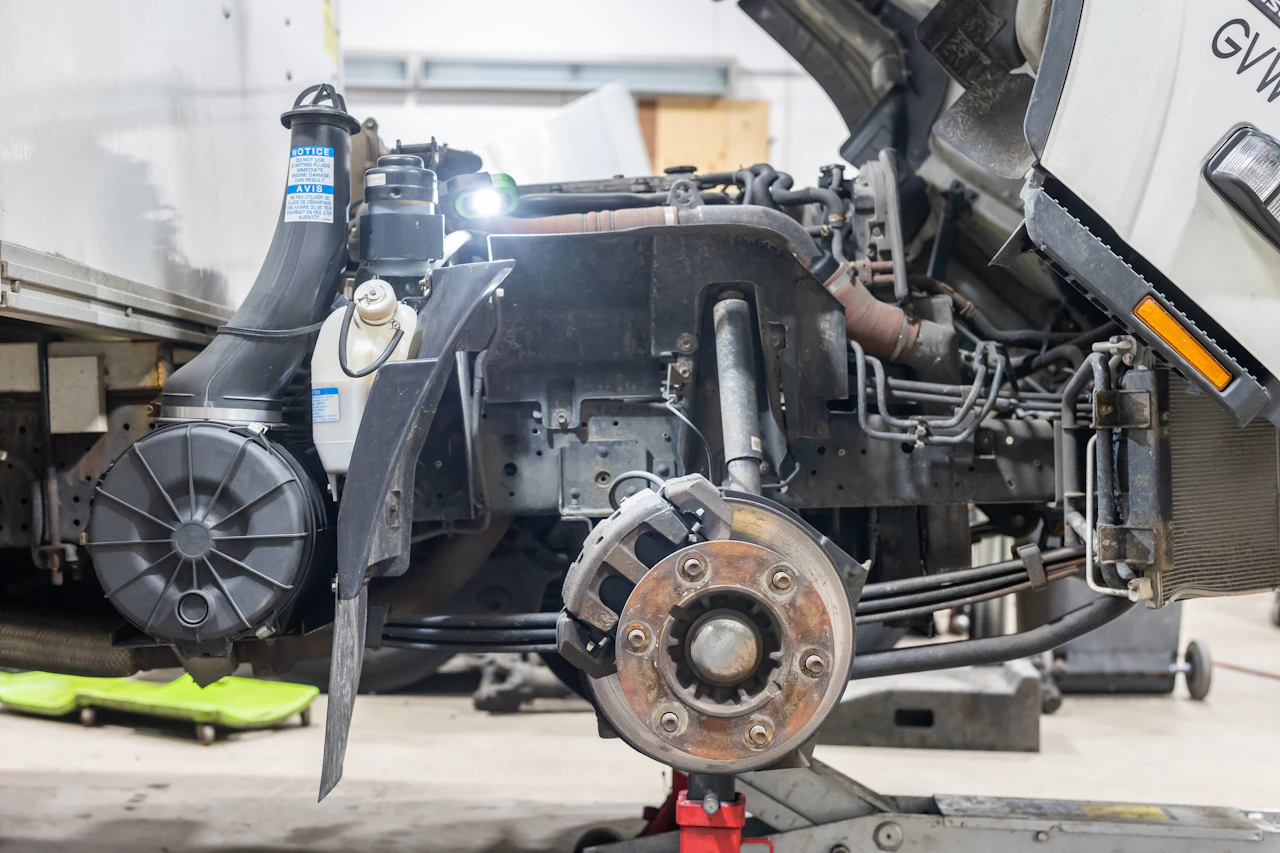Your truck’s coolant system is responsible for maintaining the engine's optimal temperature, guaranteeing efficiency and longevity. However, it can be damaged by issues such as leaks, blockages, and wear over time. Failing to recognize these problems early on can result in severe engine damage that will cost you too much time and money to fix.
In this article, we discuss how you can spot these problems before it’s too late, a step-by-step repair process, how you can stay one step ahead of problems developing, and who to contact when you need to call in the professionals.
Understanding the Coolant System
The coolant system in heavy-duty vehicles includes several key components:
- The radiator dissipates heat
- Water pump pumps coolant throughout the engine
- Hoses transports the coolant
- Thermostat ensures the coolant maintains a consistent temperature
- Coolant itself which acts as a heat transferer
Properly functioning, these components work together to prevent your engine from overheating and keep it running smoothly.
Common Signs of Coolant System Issues
Recognizing the early signs of coolant system failure is essential to nipping potential issues in the bud before they develop into more serious problems. This is going to save you time and money when it comes to repairs. Be on the lookout for:
Overheating Engine: The most obvious sign of a coolant system problem is an engine that overheats. This can be seen by your temperature gauge climbing higher than usual.
Visible Coolant Leaks: Puddles of coolant (usually a bright color) under your vehicle are a clear indicator of a leak. Coolant leaks can occur anywhere in the coolant system, including the radiator, hoses, or water pump.
Low Coolant Levels: If you find yourself needing to add coolant frequently, it suggests a leak or excessive consumption within the system. Consistently low levels can lead to poor engine cooling and overheating.
Unusual Noises: Gurgling or boiling sounds from the radiator or hoses when the engine is running can be a sign of air pockets in the coolant system, which can restrict coolant flow and reduce cooling efficiency.
Radiator Hose Damage: Soft, brittle, bulging, or cracked hoses can compromise the integrity of the coolant system. Damaged hoses can lead to leaks and poor coolant circulation, affecting the engine’s ability to maintain its temperature.
Step-by-Step Guide to Coolant System Repairs
Diagnosing Coolant System Problems
To effectively address coolant system issues, start with these steps:
Inspect for visible leaks: Check under your vehicle for any signs of coolant spills.
Check the thermostat operation: A malfunctioning thermostat can cause engine temperature irregularities.
Test the radiator cap: A faulty cap can lead to coolant loss and decreased pressure.
Conducting Repairs
Once you’ve diagnosed the issue, proceed with the appropriate repairs:
Replace damaged hoses: Look for bulges, cracks, and leaks.
Change the coolant: Regularly changing the coolant can prevent corrosion and buildup inside the engine.
Perform a coolant flush: This clears out old coolant and any particulate buildup, ensuring the system operates efficiently.
Always wear protective gear and follow safety protocols when working on your vehicle’s coolant system. Remember, safety comes first!
Repair Techniques
Beyond basic repairs, certain conditions require more detailed attention:
Sealing coolant leaks: Use high-quality sealants for minor leaks, but for larger breaches, replacing the compromised component is recommended.
Thermostat replacement: If testing indicates thermostat failure, replacing it is crucial to ensure proper engine temperature regulation.
Cleaning the radiator: Remove debris and flush the radiator with a cleaning solution to enhance efficiency and prevent overheating.
Advanced Diagnostic Tools
For more complex issues, employing advanced diagnostic tools can pinpoint less obvious problems:
Pressure testing the system: This helps detect leaks that are not visible to the naked eye.
Thermal imaging cameras: Identify hot spots and inefficiencies within the coolant system.
When to Seek Professional Help
While some repairs can be done DIY, sometimes it's best to hire professional coolant system mechanics to handle the job.
These will be complex issues, such as a malfunctioning water pump replacement or significant radiator repair, that should only be handled by experienced mechanics. Professional servicing guarantees that the repairs are thorough and can save you from future breakdowns and associated costs.
Preventive Maintenance Tips
Routine truck maintenance is key to avoiding emergency repairs. Implement these practices to ensure your coolant system remains in top condition:
- Regularly check coolant levels and top up if necessary.
- Inspect hoses and connections for signs of wear or damage.
- Schedule annual coolant system maintenance to catch issues early.
By following a proactive maintenance schedule, you can significantly extend the life of your coolant system and avoid the pitfalls of reactive maintenance.
Recap & How to Get in Touch!
Effective maintenance and timely repairs of your vehicle’s coolant system are indispensable for ensuring performance and longevity. By recognizing the signs of engine coolant issues, adhering to maintenance schedules, staying informed, and being proactive, you can keep your coolant system in peak condition.
If you need the expertise of our expert coolant system repairs, just scroll down and tap the service request button, fill out our quick and easy form, and a member of our team will be in touch as fast as possible!
